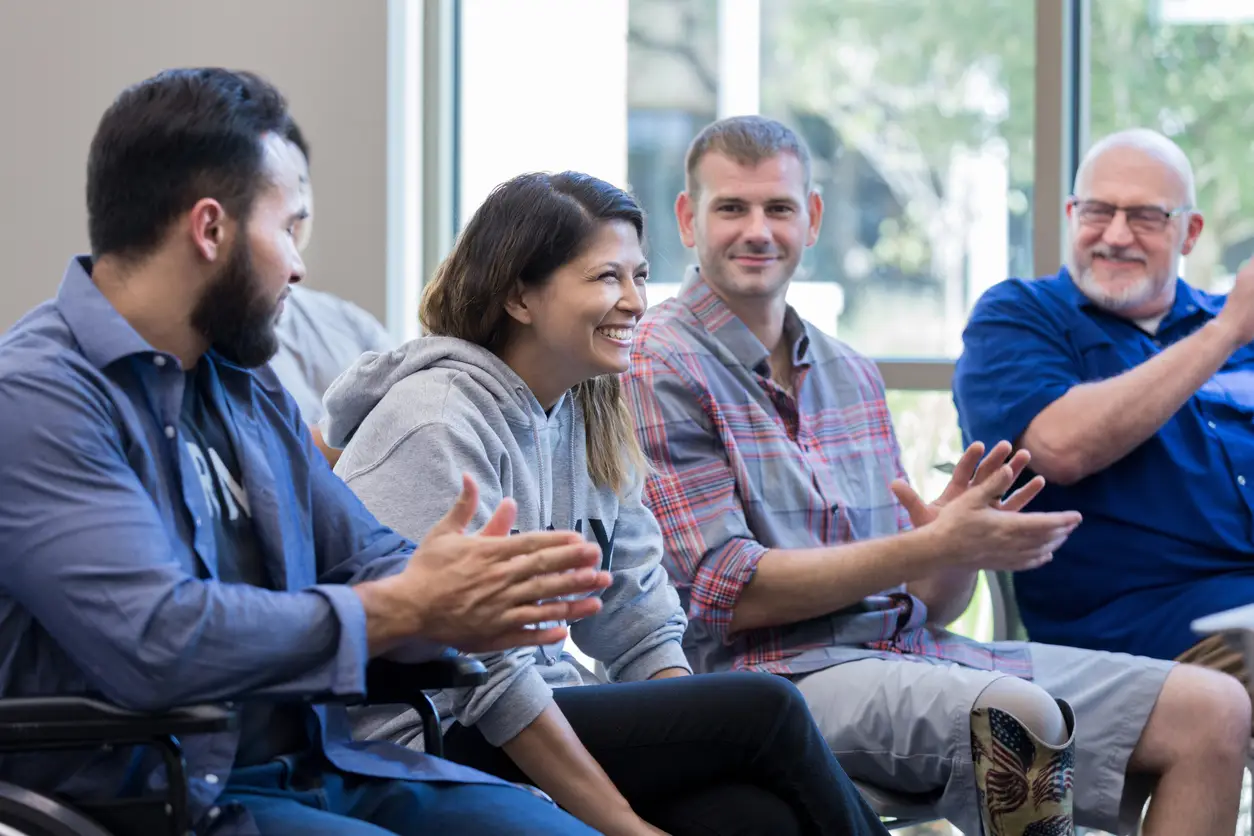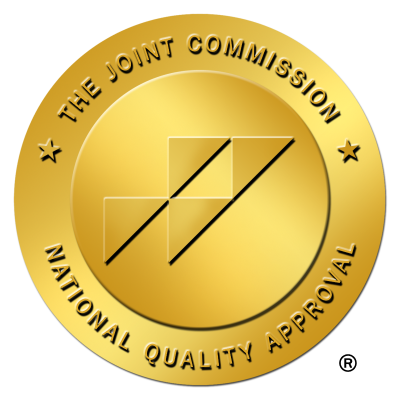Addiction Education: Learn to Heal and Help

Key Takeaways
- Evidence-based addiction education guides combine harm reduction and abstinence approaches, meeting you where you are while providing flexible pathways for growth and recovery.
- Family involvement significantly improves outcomes—research shows treatment completion rates rise and recovery periods extend when loved ones participate in educational interventions.
- Digital and hybrid programs deliver results equal to in-person education, making quality substance use education accessible regardless of location or scheduling constraints.
- Structured assessment and goal-setting using SMART objectives and regular feedback loops create measurable progress and sustained engagement throughout your recovery journey.
- Professional accreditation matters—choose programs certified by organizations like ASAM with licensed practitioners who maintain ongoing education and trauma-informed care training.
Understanding Today's Addiction Education Landscape
We've all been there—feeling overwhelmed when facing conversations about substance use. But you're not walking this path alone, and meaningful progress is absolutely possible. This addiction education guide represents a significant shift toward compassionate, evidence-based prevention and recovery approaches.
Recent data shows encouraging trends: abstaining rates of 89.5% for eighth graders and 67.1% for twelfth graders demonstrate real progress.2 However, emerging risks like fentanyl require educational strategies that skillfully combine harm reduction, prevention, and practical support frameworks.
What is Substance Use Disor (SUD)?
Defining Evidence-Based Addiction Education
When you're seeking genuine progress, an addiction education guide grounded in rigorous science becomes essential—not just well-meaning advice. Evidence-based approaches rely on tested frameworks like Life Skills Training, which have achieved over 50% reductions in substance use compared to control groups.2
"These methods don't use scare tactics; they emphasize prevention curricula, harm reduction, and recovery support that actually shape safer behaviors."
The Science Behind Prevention Curricula
An effective addiction education guide only recommends prevention curricula that withstand rigorous scientific scrutiny. Truly evidence-based programs undergo testing through randomized controlled trials and consistently demonstrate reduced substance use initiation rates across diverse populations.2
Look for programs that emphasize dose-response relationships—meaning the more completely a program is delivered, the greater the impact—and insist on high implementation fidelity at every step.
Evolving Messaging: Harm Reduction vs. Abstinence
Messaging in effective addiction education guides has evolved with real-world experience and research:
- Harm reduction recognizes that not everyone is ready or able to stop instantly—prioritizing safety, naloxone access, and gradual change without demanding total abstinence immediately
- Abstinence-based education supports a zero-use goal and equips you with tools for sustained sobriety
- Blended approaches match communication style to your actual readiness and risk factors2
If your journey requires flexibility, know that both approaches can offer a valid, life-saving starting point.
Digital and Hybrid Education Advances
Digital advancements have revolutionized how addiction education guides are delivered, making high-quality prevention education accessible where traditional services fall short. Modern hybrid approaches pair interactive online modules with in-person sessions—providing flexibility without sacrificing effectiveness.
Research shows that outcomes for these hybrid programs, especially those with peer support or virtual reality components, closely match those of in-person options.1
Role of Families and Communities in Healing
Families and communities form the backbone of sustained healing in any effective addiction education guide. When families actively participate in education and support, individuals see stronger recovery outcomes—research confirms that family involvement leads to higher treatment completion and longer sobriety periods.4
Family Involvement: Impact on Recovery Outcomes
Active family engagement consistently raises the odds of lasting success with any addiction education guide. When your loved ones participate in recovery education and support groups, you're not just getting encouragement—you gain a solid safety net that research shows boosts treatment completion and extends sober periods.4
Families willing to learn about substance use disorders help shift old patterns. With tools like shared boundary-setting, open dialogue, and structured support, it's possible to turn anxiety or uncertainty into steady progress and real healing together.
Community Prevention Models: Strategic Prevention Framework
Communities thrive when prevention isn't left to chance. The Strategic Prevention Framework, created by SAMHSA, empowers local leaders to build coordinated substance use education across every sector—schools, healthcare, law enforcement, and more.3
This proven model follows five clear steps:
- Assess community needs
- Develop capacity and resources
- Plan evidence-based strategies
- Implement coordinated actions
- Evaluate and adjust results
Addressing Equity: Rural and Underserved Populations
Accessing high-quality prevention curricula in rural and underserved areas presents real challenges—limited providers, transportation hurdles, and cultural stigma often block the path to recovery education.5
If your community feels isolated or resources seem scarce, you're not alone. Digital platforms and telehealth initiatives now bridge many of these gaps, delivering evidence-based substance use education that honors local values and traditions.
Self-Assessment: Readiness for Addiction Education
Before choosing any addiction education guide or recovery curriculum, it's essential to honestly gauge your readiness for change, current barriers, and available resources. Think of this self-assessment as the first supportive step—no shame, just clarity about where you're starting.
Personal Readiness Assessment Checklist
- Am I facing substance use that needs immediate attention, or am I aiming for prevention?
- What motivates me to seek change right now?
- How open am I to learning about recovery strategies?
- What support systems do I currently have in place?
- What barriers might prevent my full participation?
Diagnostic Questions for Individuals and Families
Every successful step with an addiction education guide starts with honest self-reflection. Research confirms that clear, structured assessment brings stronger engagement and recovery outcomes.4
For families, consider these questions:
- Have you observed recent shifts in your loved one's behavior?
- Are you ready—emotionally and practically—to take part in educational therapy or support groups?
- How do time, finances, and family roles factor into your decision?
Evaluating Support Systems and Resources
When preparing to act on an addiction education guide, take an honest inventory of your support network—family, close friends, healthcare professionals, and any local organizations you might access.
Evidence shows that individuals whose loved ones participate alongside them experience notably improved outcomes.4 Check your family's readiness, access to mental health services, and practical resources like transportation or childcare.
Recognizing Barriers: Stigma, Cost, and Accessibility
Facing the roadblocks to recovery learning takes real courage—and you're not alone if these hurdles feel daunting. Common barriers include:
Technology and telehealth offer promising pathways for many, though they require reliable internet and some comfort with digital tools.5

Decision Frameworks for Effective Addiction Education
Building a path through addiction education starts with a clear, structured framework—especially when the choices ahead feel urgent or complicated. The most successful recovery journeys begin by mapping out all your key priorities: research-backed program effectiveness, alignment with your core values, required time commitment, and the resources realistically available to you.
"Evidence shows that individuals who take the time to systematically weigh their options—using tools like checklists or side-by-side comparisons—report stronger engagement and longer-term success." Research on structured decision-making in recovery4
Criteria for Selecting Educational Approaches
Choosing the right approach in your addiction education guide means weighing what's truly effective for you—and recognizing this choice takes careful, honest consideration.
Choose This Path If: You want evidence-based standards, personal relevance, and adaptable learning that grows with your changing needs.
Weighing Evidence: Effectiveness, Relevance, and Adaptability
When comparing options in any addiction education guide, apply a practitioner's lens:
- Effectiveness: Programs like Life Skills Training have achieved over 50% reductions in substance use compared to control groups2
- Relevance: Ensure the curriculum addresses your specific age, cultural background, and recovery stage
- Adaptability: The best prevention curricula allow you to adjust intensity, pacing, and support as your needs evolve
Balancing Harm Reduction with Abstinence Messaging
Deciding how to navigate harm reduction versus abstinence messaging in your addiction education guide is a deeply personal process.
Many effective substance use curricula now blend both approaches, helping you move at your own pace without shame2.
Ethical Considerations: Privacy, Accuracy, and Confidentiality
When you engage with an addiction education guide, expect the highest ethical standards—because your safety and dignity are non-negotiable.
- Privacy Protection: Programs must guard your privacy under HIPAA and ensure no detail jeopardizes your career, family, or standing1
- Information Accuracy: Insist on up-to-date, unbiased information—outdated or stigmatizing content is unacceptable
- Confidentiality Safeguards: Look for explicit, rigorously enforced privacy protocols and written confidentiality policies
Mapping Needs: Individual, Family, and Community
Needs mapping for any addiction education guide isn't just a checklist—it's how you get clarity on where real change can take root.
Start by assessing your own readiness, substance use patterns, and health challenges, including possible dual diagnosis. Then, look at your family's support, communication style, and willingness to participate in educational therapy or group programs.4
Identifying Unique Needs Across Key Populations
Deciding Between Outpatient, Inpatient, or Hybrid Education
Selecting between outpatient, inpatient, or hybrid approaches with your addiction education guide requires honest self-assessment.
Outpatient Education
Choose This Path If: You have safe housing, reliable transportation, strong daily structure, and family or workplace support to reinforce prevention curricula and recovery skills4.
Inpatient Programs
Choose This Path If: Safety is a concern, or substance use is severe enough that medical oversight is essential. These programs create a stable, distraction-free recovery space with around-the-clock guidance.1
Hybrid Options
Choose This Path If: You need structure and flexibility during your recovery journey. These bridge intensive, professionally supervised education with gradual transition as you build confidence.
Integrating Dual Diagnosis and Trauma-Informed Care
If you're managing both a substance use challenge and a mental health condition—such as anxiety, depression, or PTSD—your best path forward is an addiction education guide with integrated, trauma-informed frameworks.
These approaches prioritize psychological safety, openly recognize that trauma often underpins substance use, and teach coping skills for both disorders simultaneously.1
Key principle: Programs grounded in trauma-informed care maintain your choice and sense of control, avoid re-traumatization, and foster collaboration instead of hierarchy.
Assessment Tools and Decision Aids
Assessment tools anchor your addiction education guide in reality—not guesswork or hope alone. Honest, systematic evaluation is where meaningful change begins.
Standardized checklists, risk assessments, and program comparison matrices help you cut through overwhelm, making your next steps clear and strategic. Individuals using formal frameworks report stronger engagement and better outcomes throughout recovery learning.4
Structured Assessment Checklists and Scoring
Using a structured assessment checklist can remove the confusion and guesswork from your recovery decision-making. These tools—standard in every high-quality addiction education guide—allow you to rate your motivation, current barriers, and available supports on a clear numerical scale.
Each checklist covers:
- Readiness for change assessment
- Support network evaluation
- Practical considerations (transportation, schedule, finances)
- Risk factor identification
- Goal-setting priorities
Utilizing Professional Guidance and Accreditation Marks
When you're comparing substance use education options, professional guidance and visible accreditation marks give you confidence that an addiction education guide meets high safety and quality standards.
Rely on licensed addiction counselors and programs recognized by organizations like ASAM, which require ongoing education and have strict credentialing requirements.1
"Accredited programs undergo detailed external reviews—including curriculum evaluation and staff credential checks—to ensure prevention curricula reflect the latest research and trauma-informed care."
Incorporating Family and Professional Feedback Loops
You don't have to figure this out on your own—building steady feedback loops with family and addiction professionals helps your recovery plan evolve with your real needs.
With any addiction education guide or prevention curriculum, regular check-ins allow for practical, timely course corrections:
- Family feedback: Notice subtle shifts like improved mood or increased engagement that formal assessments might overlook
- Professional input: Critical clinical data, monitoring adherence and milestones grounded in evidence-based approaches4
- Two-way system: Blends emotional insight and professional benchmarks for responsive, effective support
You’re not alone in this.
When mental health challenges and addiction intersect, it can feel isolating. At Arista, we offer compassionate, evidence-based, and trauma-informed care to help you heal, grow, and move forward.
Implementation Pathways: From Education to Recovery Action
Turning knowledge from your addiction education guide into real behavioral change takes more than just good intentions—it requires a structured plan, practical skills, and steady follow-through.
The path to sustainable recovery depends on implementation frameworks that bridge learning with day-to-day action, supported by evidence and real-world support networks. Research confirms individuals who use structured action plans maintain recovery 60% more successfully over time than those without.4
Tailoring Education to Different Situations
Every effective addiction education guide—without exception—must adapt to your unique situation. Different paths require different levels of support:
For Individuals in Crisis: Immediate and Medically-Supervised Learning
When every minute counts, an addiction education guide built for crisis delivers specialized, medically supervised learning that protects your life and stabilizes your health.
Choose This Path If: You're facing acute withdrawal, overdose warning signs, or severe emotional distress.
In these settings, you receive vital substance use education alongside continuous medical monitoring and evidence-based prevention curricula, providing practical harm reduction strategies without risk.1
Supporting Families: Structured Parenting and Communication Programs
Families often feel lost facing substance use challenges, but with the right addiction education guide and structured parenting programs, progress is possible.
Evidence-backed family education programs teach essential skills:
- Open communication techniques
- Healthy boundary establishment
- Creating daily routines that support healing
- Understanding substance use disorder as a medical condition
When families understand substance use disorder as a medical condition, they provide compassionate support and reduce stigma, significantly improving long-term recovery outcomes.4
Professionals and Dual Diagnosis: Integrated Care Paths
Managing both substance use and co-occurring mental health conditions isn't something you should ever face alone or with piecemeal solutions.
Choose This Path If: You're a healthcare professional or someone living with dual diagnosis issues like anxiety, depression, or PTSD.
Federal guidelines now require all DEA-registered practitioners to complete comprehensive substance use disorder training—underscoring that specialized, coordinated education is becoming the new standard across medical fields.1
You deserve a recovery plan that addresses the whole picture—your challenges and your strengths—supported by a team trained to handle complexity with compassion and skill.
Building Sustainable Recovery Skills
Developing sustainable recovery skills means moving educational insight into lasting, daily progress—step by step. An addiction education guide should go beyond theory, equipping you with real-world coping strategies and emotional regulation tools.
Research proves experiential learning, like group therapy or creative activities, strengthens healthy behaviors and lowers relapse risk by building durable neural pathways.1
Skill Development Through Experiential Therapies
If you want recovery skills that truly stick, experiential therapies give you a proven edge. These methods don't just teach coping—they let you practice them in real-life simulations.
In a well-designed addiction education guide, you'll work through:
- Role-play scenarios mimicking daily triggers
- Adventure-based tasks building confidence
- Stress drills preparing you for actual challenges
- Peer interaction exercises strengthening social skills
Choose This Path If: You value hands-on growth and want education that prepares you for actual recovery challenges.
Leveraging Group, Art, and Horticultural Therapy
Group, art, and horticultural therapy bring a deeply practical—yet nuanced—layer to your addiction education guide:
Group Therapy
Creates a safe, peer-supported space to work on communication and social skills, which directly foster connection and accountability on the path to recovery.
Art Therapy
Unlocks emotional healing using creative outlets; if traditional talk feels daunting, painting or music lets you process tough feelings and build self-awareness.
Horticultural Therapy
Grounds recovery in hands-on activity, where nurturing plants day after day becomes a living reflection of your own growth and resilience.
By choosing these evidence-based modalities, you're actively building the skills and mindset needed for sustainable healing.1
Continuity of Care: From Sober Living to Aftercare Planning
Maintaining continuity of care forms a critical bridge between structured education in your addiction education guide and your successful transition to independent living.
Sober living homes offer valuable structure, peer accountability, and daily routines—essential for practicing recovery skills outside of clinical environments while staying connected to evidence-based support.4
Practical aftercare planning involves:
- Scheduled counselor check-ins
- Participation in ongoing support groups
- Flexible prevention curricula that evolve with your circumstances
- Regular assessment and adjustment of goals
Resource Planning: Budgets, Timelines, and Skills
Strategic resource planning is vital in any addiction education guide, and mapping out your recovery resources is not a step you want to skip. That means getting real about the time and skills you, your family, and your support network will need to sustain progress.
Studies confirm that when you plan for realistic timelines and skill-building—not just hope for quick fixes—recovery outcomes measurably improve.4
Estimating Costs for Education and Treatment
Planning your budget for substance use education and treatment is often one of the most stressful parts of starting—or supporting—a recovery journey.
Digital or hybrid addiction education programs can help lower overall expenses while providing evidence-based care.1
Planning Timelines: Acute Needs vs. Long-Term Recovery
Creating an actionable timeline in your addiction education guide involves accepting that different recovery phases require distinct commitments:
When acute needs arise—such as medical stabilization, withdrawal management, or severe distress—you're looking at 30 to 90 days of focused, medically supported education and safety planning that can't wait without risking health.1
Necessary Skills and Qualifications for Effective Support
To truly benefit from your addiction education guide, both individuals and their support teams need to bring specific, proven skills to the table.
For your own recovery, prioritize:
- Candid communication abilities
- Practical stress management techniques
- Unwavering commitment to fully engage with prevention curricula
- Willingness to practice new coping strategies consistently
Those offering support must demonstrate:
- Active listening skills
- Current understanding of substance use as a medical diagnosis
- Consistent application of trauma-informed care principles
- Ability to maintain appropriate boundaries
When evaluating programs or professionals, always confirm credentials: seek out licensed addiction counselors, ASAM-accredited providers, and teams adhering to federally mandated substance use education standards.1

Your Next 30 Days: Action Planning and Success Metrics
Your first 30 days with any addiction education guide are where meaningful change starts taking shape. Here's what we recommend: set clear, measurable goals right away—aim to track progress using supportive metrics like knowledge gained and new skills applied.
Studies show that people who create structured action plans during this window experience far better recovery outcomes than those who go it alone.4 Lean on your prevention curricula, engage support networks, and celebrate each small win.
Setting Achievable Addiction Education Goals
Establishing realistic, step-by-step goals is the key to moving from hope to genuine recovery progress in your addiction education guide. Clear objectives bring focus and resilience—especially during tough stretches when motivation dips.
Begin by outlining knowledge milestones, skill-building targets, and concrete actions you can check off. Research confirms that setting structured, attainable goals improves engagement and supports lasting behavioral change.4
Establishing SMART Objectives for Learning and Recovery
Setting SMART objectives in your addiction education guide means defining recovery goals you can see and measure. Clear, stepwise targets—specific, measurable, achievable, relevant, and time-bound—remove confusion and prevent overwhelm.
For example, instead of a vague aim like "get better," choose actionable skills such as "complete all prevention curricula modules by week six."
Tracking Progress: KPIs for Individuals and Families
Tracking your growth with real KPIs is where an addiction education guide moves from theory to actionable progress.
Individual KPIs:
- Knowledge retention (quiz scores, module completion)
- Frequency of practicing coping skills
- Consistent involvement in prevention curricula
- Days engaged in recovery activities
- Ability to identify and manage triggers
Family KPIs:
- Communication improvements
- Shared participation in educational sessions
- Reduction in family conflicts
- Implementation of healthy boundaries
- Support network engagement
Evidence shows that using clear, structured metrics guides recovery adjustments and celebrates true progress.4
Adjusting Plans Based on Real-Time Feedback
Adapting your addiction education guide based on daily feedback is a skill that separates wishful thinking from true progress. As your needs and circumstances shift, use concrete feedback tools:
- Self-reflection journaling
- Weekly provider check-ins
- Behavioral tracking apps
- Family feedback sessions
- Peer support group input
Research confirms people who actively refine prevention curricula when needed see stronger long-term engagement and results.4 When something isn't clicking, don't hesitate to switch strategies or timelines; this adjustment is a sign of strategic progress, not failure.
Building Your Support Network
Building a reliable support network is one of the smartest investments you'll ever make in your recovery journey. An effective addiction education guide always emphasizes connecting with compassionate family members, trusted community groups, and professional resources.
"Research highlights that individuals who engage multiple support layers—practically and emotionally—demonstrate stronger engagement and longer-lasting outcomes in substance use education." Evidence on multi-layered support systems4
Engaging Family, Community, and Professional Allies
You don't have to figure out recovery alone. An addiction education guide works best when you actively involve family, community, and experienced professionals.
Choose This Path If: Your goal is to build lasting, multi-layered support through every phase of healing, committing to this integrated approach sets you up for measurable, sustainable progress.
Leveraging Digital Tools and Educational Resources
Digital tools now empower your recovery journey in ways once unthinkable. With a strong addiction education guide, you gain around-the-clock access to prevention curricula, peer support, and interactive learning—no matter where you're starting from.
Mobile apps feature:
- Real-time progress tracking
- Immersive resources such as virtual reality therapy
- 24/7 crisis support hotlines
- Peer connection platforms
- Educational module libraries
Research confirms these online modules and harm reduction resources are just as effective as in-person formats.1
Choose This Path If: Life's schedule demands flexibility or you live far from treatment centers—these digital solutions keep learning on track and safety information within reach.
Utilizing Accredited Programs like Arista Recovery
Choosing an accredited recovery program is a cornerstone of any trustworthy addiction education guide. Facilities like Arista Recovery uphold national standards and are evaluated for curriculum effectiveness, staff training, and ethical care every step of the way.
Look for accreditation from organizations such as ASAM, which requires rigorous continuing education—over 300 hours of specialized training—ensuring prevention curricula reflect the latest research and trauma-informed care.1
Accreditation means your learning environment supports both evidence-based outcomes and your right to privacy, giving you real confidence that every education and treatment resource you receive is held to the highest professional standards.
Addiction Treatment: What You Need to Know
Evaluating Outcomes and Refining Your Approach
Continuous evaluation sits at the heart of any addiction education guide that truly supports your progress. We encourage you to blend measurable results—such as milestones from your recovery curriculum—and honest self-reflection, family feedback, and input from providers to capture your growth from every angle.
Consistent evidence shows that those who review and refine their learning paths see much stronger, longer-term recovery outcomes than those who simply coast.4
Interpreting Quantitative and Qualitative Success Indicators
Tracking your progress in any addiction education guide means working with both hard numbers and personal reflections.
Balancing both helps you recognize every bit of forward motion, not just what's easy to count.4
Responding Ethically to Setbacks and Privacy Concerns
Setbacks are part of every real recovery journey, and safeguarding both ethics and privacy during these times is essential for lasting growth.
If you encounter a difficult week or make a mistake, your addiction education guide should encourage honest self-reflection in a compassionate, confidential setting. Programs and practitioners must keep recovery education experiences private—protected by federal laws like HIPAA.1
Make sure your prevention curricula outline:
- Exactly who can access your progress notes
- How records are kept and secured
- When information might be shared with your family or care team
- Your rights to review and control your information
When handled transparently, ethical setbacks become opportunities for learning and building trust within your support network.
Celebrating Milestones and Planning Future Steps
Recognizing your achievements—no matter the size—is vital for building sustainable motivation in your recovery journey. In every addiction education guide, we urge you to acknowledge each completed prevention module, the moment you reliably use a new coping skill, or a hard-won conversation breakthrough with family.
Evidence confirms that marking these milestones significantly boosts engagement and encourages continued growth.4
Milestone Celebration Ideas
- Share achievements with your support network
- Document progress in a recovery journal
- Set new, challenging but achievable goals
- Reward yourself with healthy activities
- Reflect on how far you've come
Use these moments to set clear, forward-looking goals. Expanding your life skills, investing in healthy relationships, and planning next steps ensures that each success strengthens your foundation for long-term healing and resilience.
Frequently Asked Questions
It's completely normal to have big, sometimes overwhelming questions as you dig into any addiction education guide. You're taking initiative, which matters greatly, and deserve reliable, research-backed answers—no matter where you're starting. This FAQ section pulls from trusted evidence, hands-on practitioner experience, and real stories we've encountered supporting families and individuals just like you. The addiction education guide prioritizes your safety, autonomy, and measurable progress, responding honestly to challenges many face when seeking prevention curricula or recovery support.1, 4 Every question posed here has the power to give you clarity and hope along your learning journey.
How do I decide between harm reduction and abstinence-based addiction education for my situation?
Choosing between harm reduction and abstinence education within your addiction education guide comes down to your current readiness for change, the safety risks you face, and your available support network. Harm reduction is often the wisest option when immediate cessation feels impossible—think of it as prioritizing life-saving strategies and gradual behavioral improvement. This approach includes overdose prevention and practical educational tools. Abstinence-based substance use education is ideal if you're personally committed to sobriety and have strong family or peer support to encourage your recovery journey. Evidence-based programs frequently blend both, meeting you compassionately where you are and giving you the flexibility to grow into recovery at your own pace. 2, 4
What is the typical cost range for evidence-based addiction education programs?
Cost surprises can make a daunting process even harder, so let's clarify what you might face with a quality addiction education guide. While prices vary by location and program type, evidence-based substance use education and prevention curricula often require significant investment. Digital and hybrid programs tend to lower total expenses without sacrificing quality.1 Insurance may offset part of medically necessary treatment, but always check coverage closely. Including family education is a smart move—these supports improve outcomes and are well worth factoring into your resource planning.4
How long does it take to complete an addiction education program and see results?
Timelines for addiction education programs vary, and there's no shame if your journey takes longer than expected. Most people using a structured addiction education guide complete prevention curricula in 6–12 weeks, but the first signs of meaningful change—like improved coping skills—often become noticeable within 30 to 90 days of consistent participation.4 More intensive educational therapies may shorten this to 4–6 weeks, while deep, lasting neurological and behavioral change usually require 3–6 months or longer. Stick with it: every week of engagement counts and puts you closer to sustained recovery and new resilience.
What insurance options or financial aid are available for addiction education and treatment?
You're working hard to prioritize recovery, and you deserve every chance at accessible support—know that you're not alone sorting out insurance or financial aid. An effective addiction education guide helps you weigh practical options: Most private insurance covers a significant portion of medically necessary substance use education and treatment under mental health parity laws.1 Medicaid can make prevention curricula and recovery services more attainable for those facing financial hardship. Community grants, sliding-scale payments, Employee Assistance Programs, and nonprofit or faith-based groups further widen the path to evidence-based substance use education for families at every income level.
How does addiction education address co-occurring mental health disorders (dual diagnosis)?
If you or your loved one faces both substance use and mental health conditions, know that an effective addiction education guide meets you with integrated, trauma-informed support. Nearly half of those with substance use challenges experience issues like anxiety, depression, or PTSD—making dual diagnosis the rule, not the exception.1 The best prevention curricula build a safe, collaborative learning environment where you can process trauma, learn coping strategies for both disorders, and maintain personal agency throughout your healing. Programs move beyond one-size-fits-all approaches by providing coordinated care that strengthens skills for managing life on both fronts, always honoring your pace and privacy.
What are the benefits of integrating family into addiction educational interventions?
Integrating family directly into an addiction education guide consistently boosts healing in ways few other interventions can match. When families engage with evidence-based prevention curricula and recovery support, research shows treatment completion rates rise and periods of sustained recovery extend far beyond what individuals usually achieve alone.4 Shared learning lays the groundwork for healthier boundaries, honest conversations, and an understanding that substance use disorder is a medical issue—not a personal failing. Celebrating progress together transforms family dynamics, eases shame, and creates a supportive environment where lasting change becomes possible for everyone on the journey.
Are digital or hybrid addiction education programs as effective as in-person options?
You might wonder if digital or hybrid programs can match the results of traditional in-person education. The evidence says yes: when built on interactive elements and real support, these formats in your addiction education guide are just as effective as face-to-face learning.1 Studies show hybrid models—including virtual reality, peer connection, and adaptive prevention curricula—deliver progress on par with classroom methods. Choose a digital or hybrid option if you need flexible scheduling, want continual access to resources, or face obstacles accessing providers locally. Your learning—and your recovery—deserve accessibility and proven results.
What qualifications should I look for in addiction educators or professionals?
When you're choosing professionals for your addiction education guide, start with practitioners who are licensed, certified by organizations like ASAM, and meet federally required training—such as at least eight hours for DEA-registered providers.1 Insist on trauma-informed care training and experience with both dual diagnosis treatment and harm reduction strategies. Look for educators who maintain active credentials, pursue ongoing professional development, and value evidence-based substance use education. Culturally competent, privacy-aware professionals who involve your existing supports are best positioned to guide you and your family toward meaningful, measurable progress.
How do I measure the success of an addiction education intervention for myself or a loved one?
Measuring success with your addiction education guide means looking at more than just attendance—it's about real changes you and your loved ones can feel and observe. Watch for steady engagement in recovery resources, growth in coping and problem-solving skills, and improvement in relationships at home or in your support network. Quantitative indicators include session participation, module completion, and tracking new healthy habits, while qualitative signs appear as confidence, resilience, and stronger communication. Family members can watch for fewer conflicts and a shift toward supportive, non-enabling roles. Combining these measurable outcomes with honest self-reflection helps you see the full impact of your prevention curricula and recovery journey.4
What can I do if addiction education resources are limited or unavailable in my rural area?
Accessing support in rural areas poses unique hurdles, but you absolutely have options—no one should feel left behind when seeking an addiction education guide. Digital learning platforms and telehealth now deliver prevention curricula and substance use education right to your home, connecting you to credentialed professionals regardless of distance.5 When local resources feel sparse, mobile outreach and state-run traveling teams are worth investigating—they often collaborate with schools, clinics, or places of worship. Forming local support groups that use digital modules fuses peer learning with accessible, evidence-based education. Many accredited programs now design distance-learning just for rural and underserved communities. Your recovery can begin—no matter your ZIP code.
How can employers or schools play a role in supporting addiction education?
Both employers and schools have a practical, far-reaching impact in advancing any addiction education guide. When workplaces embed evidence-based prevention curricula into employee assistance programs and offer confidential support, it becomes easier for staff to seek help without stigma.2 Schools can deliver substance use education during formative years, teaching life skills and healthy peer interactions. Choose this path if you want regular access to structured support, stress management resources, and opportunities for honest conversation about substance use and mental health. Every open door and trained ally in these settings creates a safer, more supportive environment for lasting change.
What should I expect during the first 30 days of engaging with an addiction education program?
Your first month in an addiction education guide is a big commitment and—let's be honest—it can feel overwhelming at first. Expect a structured immersion: intake and medical assessments, real-time safety planning, and the start of prevention curricula tailored to your needs. You'll join daily or weekly sessions on core topics like managing triggers and improving communication. Many programs include skill-building with your support network involved from the start, ensuring learning fits your specific circumstances and goals.4 Stay engaged—research shows these early weeks set the foundation for lasting progress in substance use education.
How can I maintain privacy and confidentiality while seeking addiction education or treatment?
Protecting your privacy on the path to recovery is a valid worry and, honestly, you should expect nothing less than strict safeguards. Every reputable addiction education guide should detail protocols that uphold confidentiality—and programs following federal standards like HIPAA are required to safeguard every piece of your health information, including progress in educational therapy and substance use education.1 Look for clear, written privacy policies, secure record-keeping systems, and staff trained to handle sensitive information. You always have the right to review your records, know who accesses them, and withdraw your consent for sharing at any point. Your safety and trust fuel real learning—don't settle for less.
How do I find reputable, accredited addiction education programs?
You deserve confidence when choosing an addiction education guide—so let's break down what to look for. Prioritize programs accredited by organizations such as ASAM, which requires rigorous ongoing training and at least 300 hours of continuing education for addiction professionals1. Confirm the program follows recent federal mandates (for example, the eight-hour training now required for DEA-registered practitioners) and is either state-licensed or partnered with major healthcare systems. Consistently review outcomes—seek out programs that publish patient testimonials, completion statistics, or peer-reviewed results. For peace of mind, contact your local mental health center or trusted healthcare provider for referrals to substance use education resources or prevention curricula that align with evidence-based best practices.
Conclusion: Empowering Your Path with Comprehensive Support
Completing this addiction education guide is more than gathering information—it's a courageous step toward real recovery and lasting change. You've explored assessment tools, prevention curricula, and support strategies rooted in the best available science.
Research confirms that following evidence-based pathways greatly improves long-term substance use outcomes, especially when family and support systems are engaged.4 Now is the time to translate what you've learned into practical steps that match your goals, values, and resources.
Every honest effort—whether you're seeking help for yourself, supporting a loved one, or building community education—creates forward momentum. You're not alone, and every bit of progress truly matters. Your journey toward healing starts with the next step you choose to take.
References
- ASAM Education. https://www.asam.org/education
- Substance Abuse Prevention and Education. https://www.ebsco.com/research-starters/education/substance-abuse-prevention-and-education
- SAMHSA Framework. https://www.samhsa.gov/technical-assistance/sptac/framework
- Courage to Speak Foundation. https://couragetospeak.org/courage-to-speak-foundation-courageous-parenting-101/
- Addiction Medicine Fellowship Growth. https://wexnermedical.osu.edu/departments/innovations/psychnews/doctors-are-training-the-next-addiction-medicine-workforce
Support that moves with you.
You’ve taken a brave first step. At Arista Recovery, we’re here to help you continue with best-in-class care designed for long-term healing and support.
.webp)






